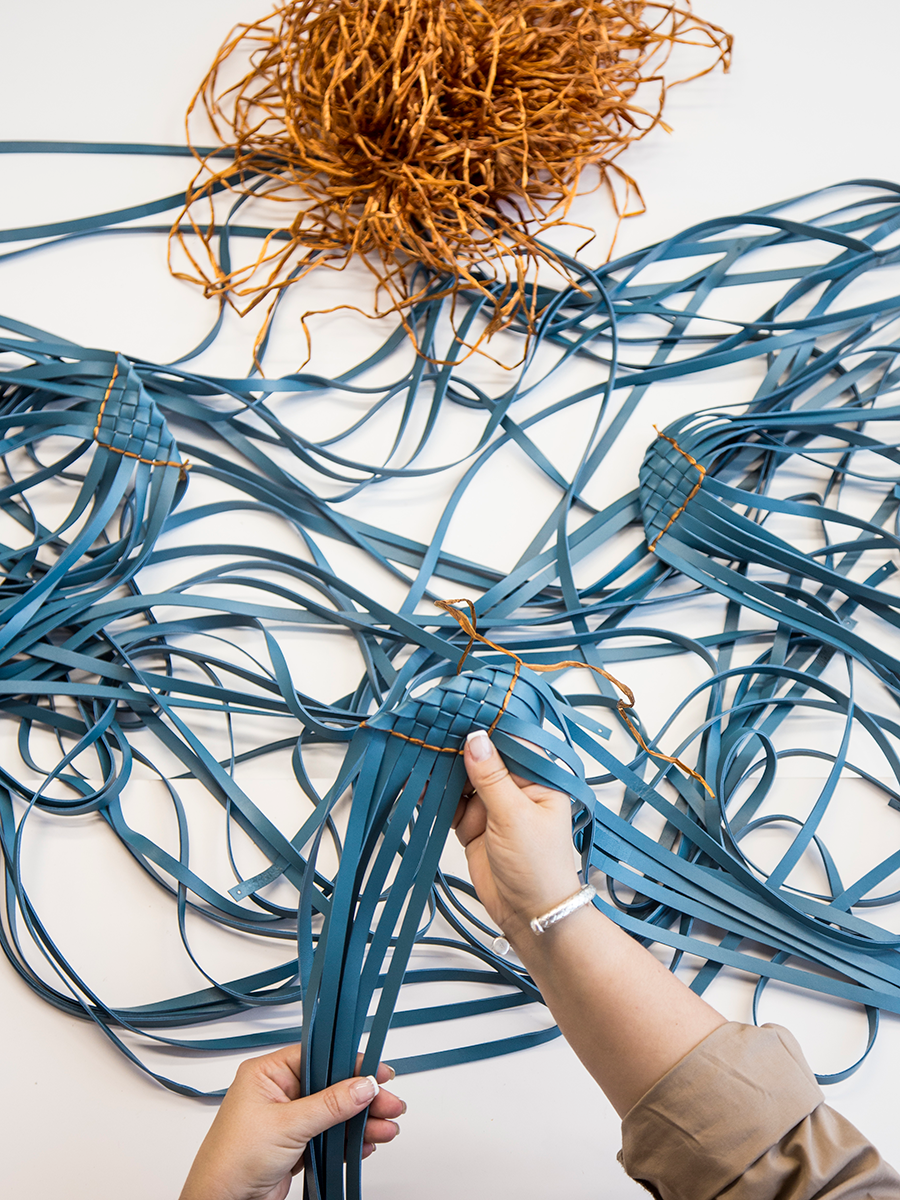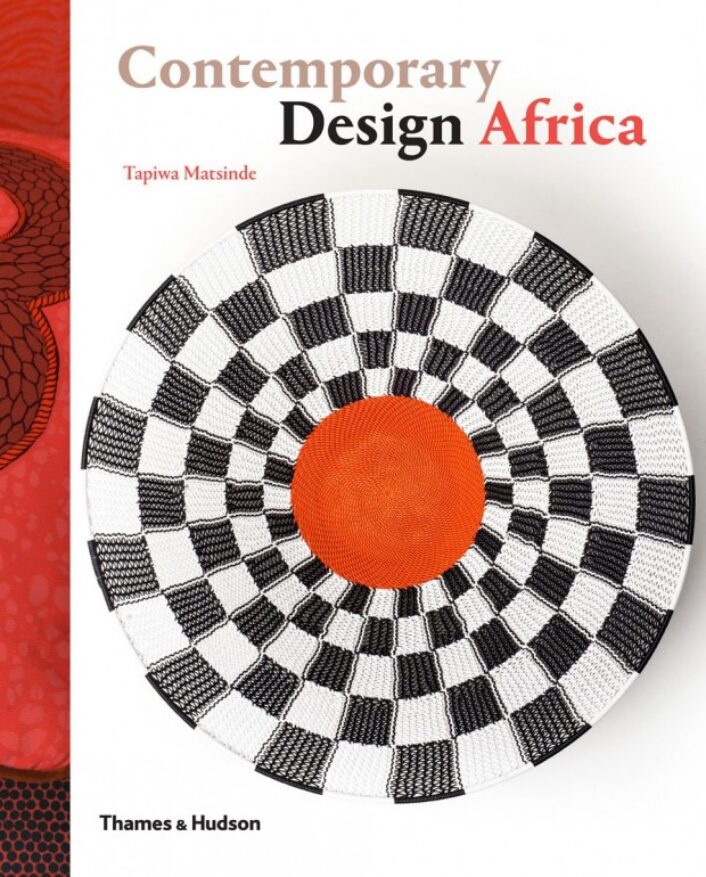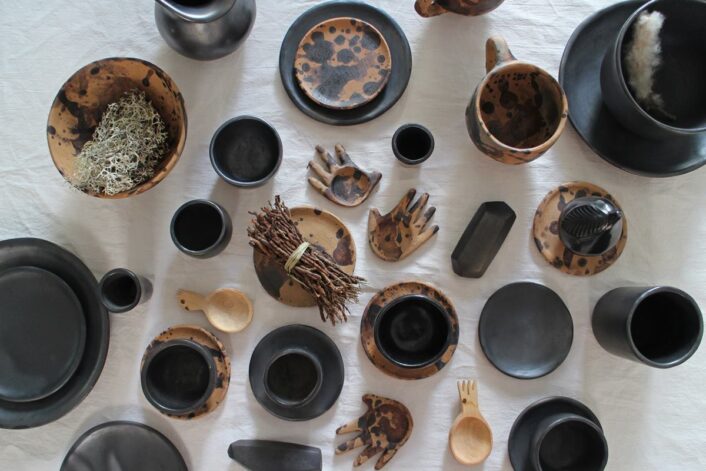Design
Stephen Burks
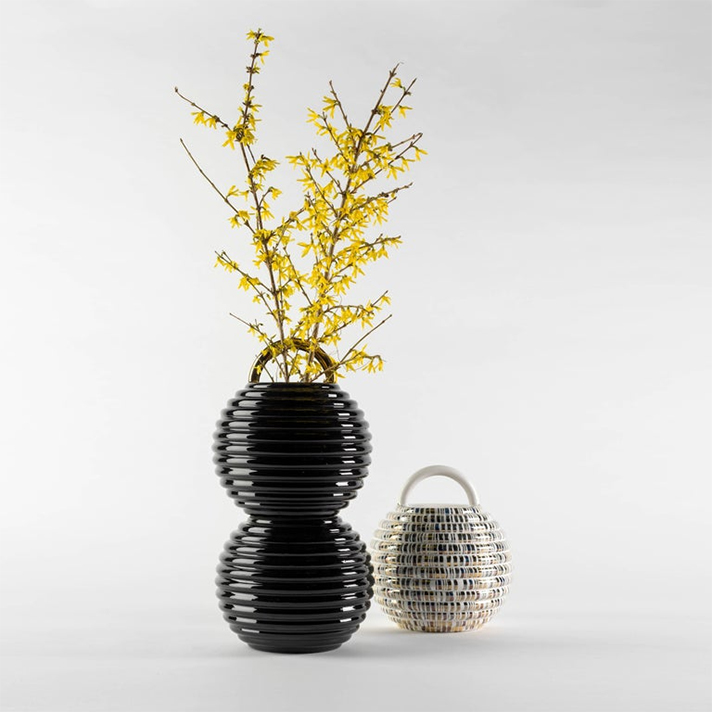
Grasso Vases
Image courtesy of: 1st Dibs
Stephen Burks has spent the past twenty years traveling the world in order to gain experience that would be valuable for his designs. More recently however, the Brooklyn-based designer quickly became a creative force and revered educator. His most recent passion is generating opportunities for disadvantaged college students and for artisan communities in the developing world.
Interestingly, one place that Burks returns to time and again is Berea, Kentucky. This little town was founded in 1855 by abolitionists and it is home to Berea College… the first interracial and co-ed college in the South. The designer arrived there to partake in the college’s Crafting Diversity in Design program. This initiative allows students to collaborate with artists on handmade projects in a world-study program enhancing Appalachian craft traditions.
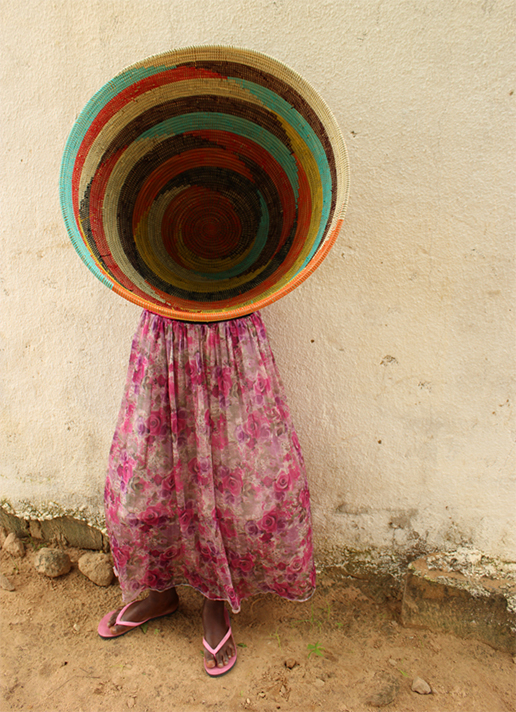
Senegal Basket Weaving from 2015.
Image courtesy of: Archi Tonic
The artist told Liz Logan (courtesy of 1st Dibs), “When I learned the history of the college, I simply could not say no. Diversity is in its DNA and I want to do everything I can to support that.” He is eager to promote cultural perspectives which is why he began his never-ending journey to discover how our surroundings are built. In such, Burks started Stephen Burks Man Made.
This design practice revolves around connecting tribal traditions and contemporary aesthetics… Burks effortlessly combines traditional craft techniques with his unique design perspective. He explained that growing up Black in Chicago, he felt a unique connection to Africa. When he first visited Africa in 2005, he was instantly changed and he realized he needed to infuse his work with African influences. A mere two years later, Burks started working with South African artisans to produce vessels from painted wire. These were made in the shape of Tatu tables for basket weavers, lamp shades and lamp fixtures from sweetgrass and colorful recycled plastic were the finished product.
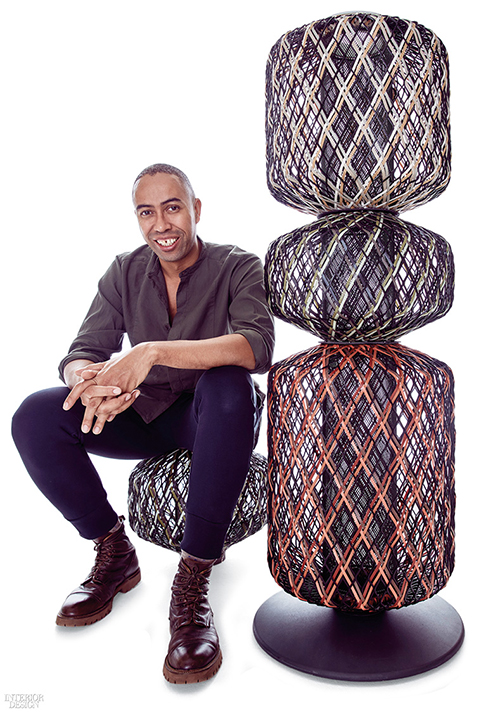
Burks designed “Others” for DEDON… the outdoor lighting collection was inspired by the designer’s commitment to global diversity. In describing the inspiration behind the collection, he says, “We all came from someplace else once. There was a time we were the other. So I imagined a colorful community of dreams.” The vision segued into a trio of lanterns made by the same artisanal approach he learned in Africa- handwoven proprietary synthetic fibers onto power-coated aluminum frames.
Image courtesy of: Interior Design
During Burks first trip to the African continent in 2005, he visited Cape Town. There, he was lucky to get the chance to work with twelve different artisan groups. Burks worked with each group for a couple of hours a day. He calls it “design boot camp” both for himself and for the artisans with whom he worked. This turned out to be a life-altering experience; for the first time Burks was able to understand a product’s complete lifecycle. In addition, Burks understood how making a product profoundly impacts an artisan’s life.
Burks realized that the artisans were taking a big risk working with him since they were already losing money taking the time to work with him. He felt responsible in sharing design concepts that could be immediately applied and those that have the greatest potential to positively impact their financial status. This became a lightbulb moment… Burks saw the direct consequences of implementing strategies that were based on designing for the “average Joe.”
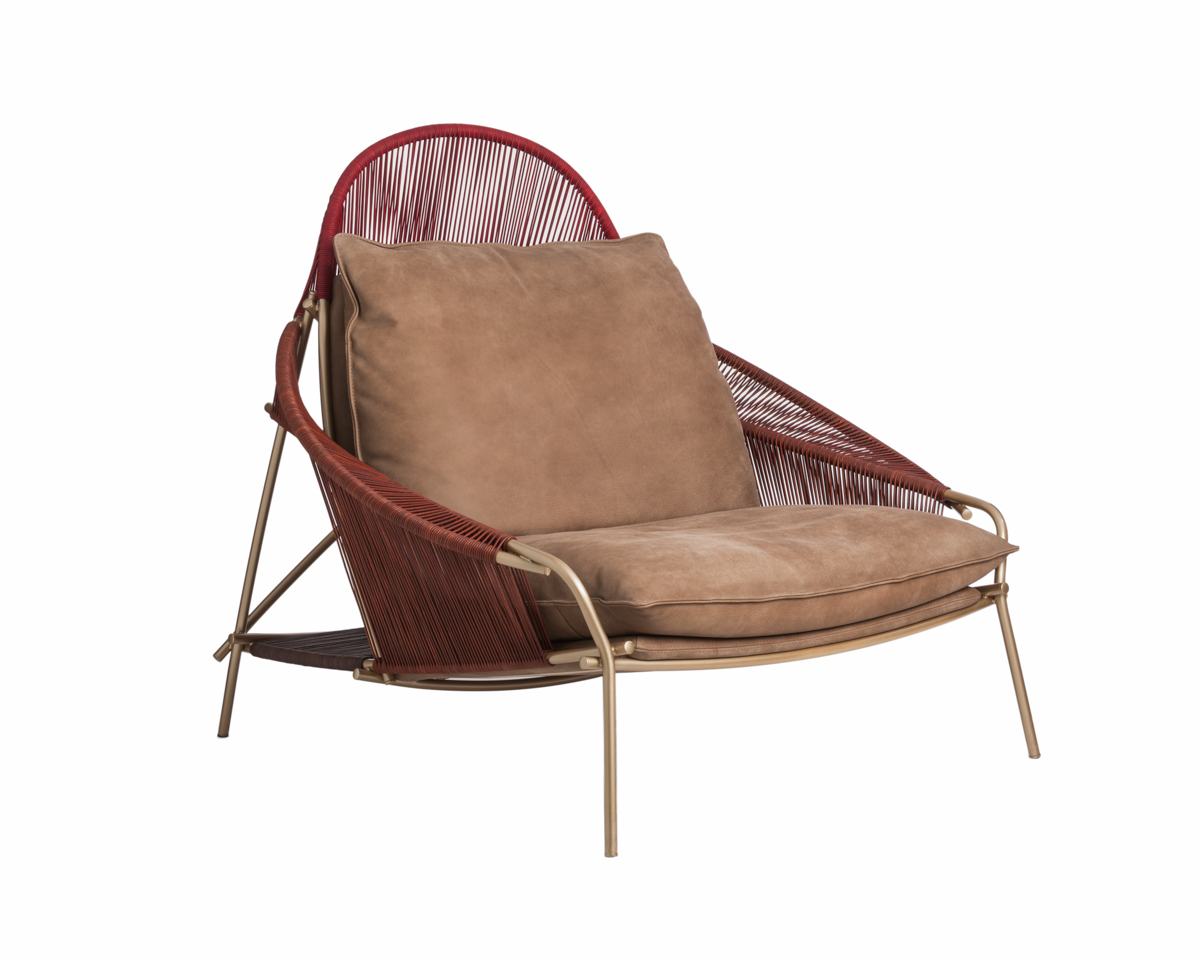
The “Traveler Chair” is constructed by weaving leather cords over a metal frame, and covered with leather cushions.
Image courtesy of: Design Milk
Burks has collaborated or consulted with many of the world’s top high-end companies among which are: DEDON, Missoni, Design Within Reach, Swarovski, and Linge Roset. Several years ago, the designer teamed up with Roche Bobois to present the company’s first collaboration with an American designer in their forty-year history. Burks traveled to Indonesia with Nicolas Roche to gather inspiration for the Traveler collection of chairs.
About the collection, Burks told Beth Stebner (courtesy of Modern Mag), “I love color, I love pattern, I love texture. For me, the Traveler line takes the iconic Roche Bobois brand and transforms it, taking inspiration from the desire to bring a little piece of paradise home with you after your travels. To me, color communicates a kind of humanity, a dynamic sense of place coming from real culture and real people, and not necessarily something that could be pumped out by a machine. There’s also a cultural legibility at work when we exhibit how things are made. Cord going around and around a tube catches the imagination and makes you wonder, “Where did this come from?” What luxury is for me today is how something is made. You can trace this production back to a people and a culture and a way of making that is timeless.”
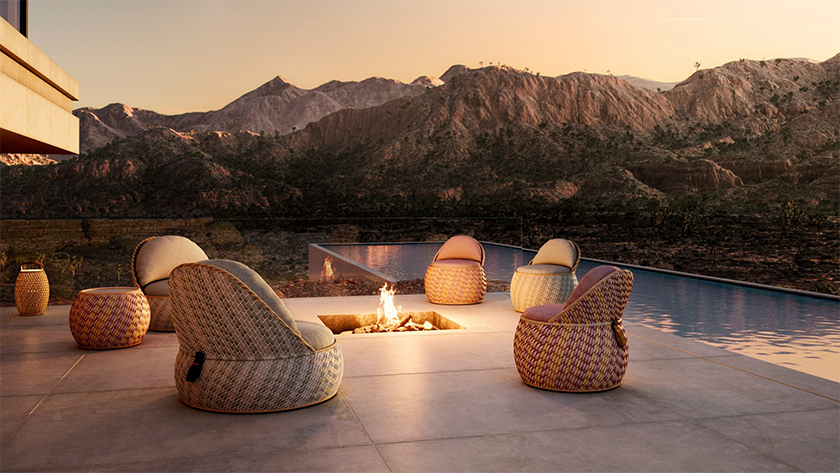
DEDON’s Dala collection includes lounge chairs sofas, and club chairs all made with a power-coated aluminum mesh frame interlaced with fabric strips that are assembled from a durable, synthetic fiber using an artisan weaving technique that comes from the Cebu Islands of the Philippines.
Image courtesy of: Dezeen
Burks works extremely hard to try and incorporate local artisans in each and every project. For his 2014 collaboration with DEDON for their new Dala and Ahnda Collections, the designer arrived in the Philippines with only rough sketches. He had no clue how the final weave would be developed. However soon enough, the artisans had resolved the outstanding details. It’s best described by Burks himself (courtesy of Craft Council), “It still takes nearly a week to weave one chair, but this is where the luxury truly lies – in the authenticity of the hand. Brands like Hermès leverage and celebrate this kind of appreciation for making every day, so why can’t artisans in the Philippines?”
We wonder also… but as more and more designers strive to employ a global perspective, perhaps these questions will all get answered and our lives will become more international in the most positive of ways.
